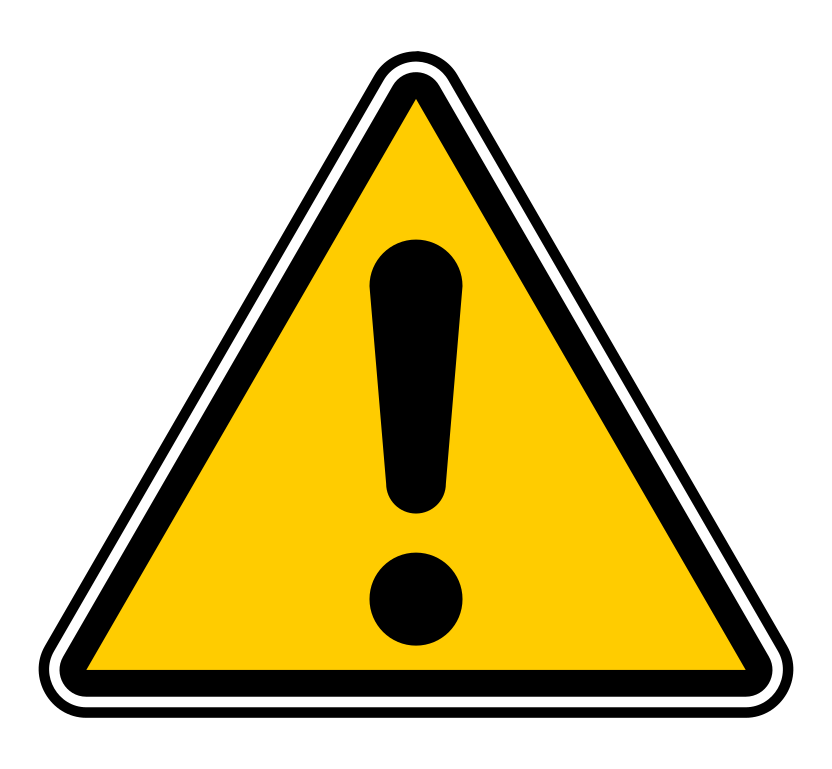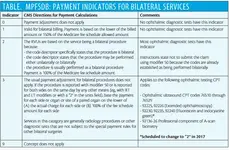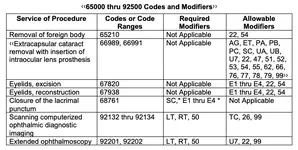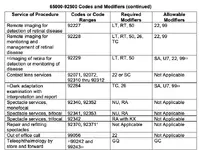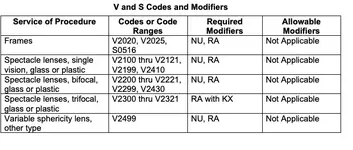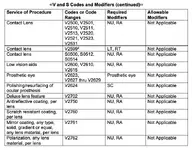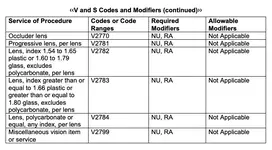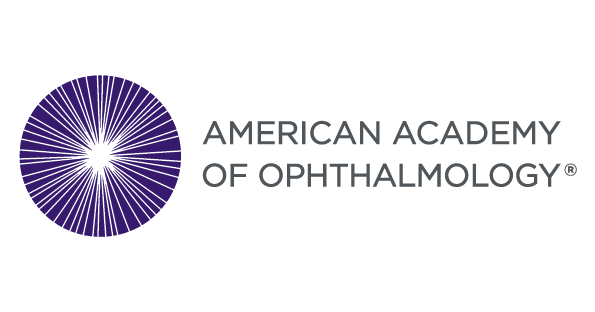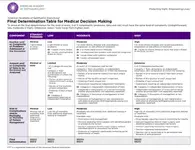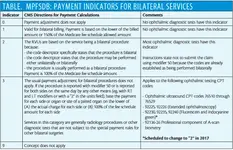Coding Glaucoma
Assign as many codes from category H40, Glaucoma, as needed to identify the type of glaucoma, which eye is affected, and the glaucoma stage.
Bilateral glaucoma with
same type and stage
When both eyes are documented as being the same type and stage, and there is a code for bilateral glaucoma, report only the code for the type of glaucoma, bilateral, with the seventh character for the stage.
If
both eyes are documented as being the same type and stage, and the classification does not provide a code for bilateral glaucoma i.e. subcategories H40.10, and H40.20) report only one code for the type of glaucoma with the appropriate seventh character for the stage.
Bilateral glaucoma stage of
different types or stages
For bilateral glaucoma and each eye is documented as having a different type or stage, and the classification distinguishes laterality, assign the appropriate code for each eye rather than the code for bilateral glaucoma.
Bilateral glaucoma and each eye is documented as having a different type, and the classification does not distinguish laterality (i.e., subcategories H40.10, and
H40.20), assign one code for each type of glaucoma with the appropriate seventh character for the stage.
Bilateral glaucoma and each eye is documented as having the same type, but different stage, and the classification does not distinguish laterality (i.e.,
subcategories H40.10 and H40.20), assign a code for the type of glaucoma for each eye with the seventh character for the specific glaucoma stage documented for each eye.
A patient admitted with glaucoma and stage evolves during the admission, assign the code for highest stage documented.
Indeterminate stage glaucoma
Assignment of the seventh character “4” for “indeterminate stage” should be based on the clinical documentation. The seventh character “4” is used for glaucomas whose stage cannot be clinically determined. This seventh character should not be confused with the seventh character “0”, unspecified, which
should be assigned when there is no documentation regarding the stage of the glaucoma.
Glaucoma is a group of diseases that can damage the eye’s optic nerve and is the leading cause of blindness in the United States. The codes for glaucoma are located in categories H40-H42 in ICD-10-CM and are broken down by type, laterality (in some cases), and stage (in some cases):
- Preglaucoma, unspecified (H40.00- through H40.06-): Also called glaucoma suspect. A person with one or more risk factors which may lead to glaucoma, but currently does not have definite glaucomatous optic nerve damage or visual field defect. The codes have choices for right, left, bilateral, and unspecified.
- Primary open angle glaucoma (H40.11-): This is the most common form of glaucoma that occurs mainly in people over the age of 50. There are no symptoms with primary open-angle glaucoma. It occurs when the eye’s drainage canals become clogged over time, causing the intraocular pressure (IOP) to rise.
- Low-tension glaucoma (H40.12-): Also called normal-pressure glaucoma. The optic nerve is damaged even though the pressure in the eye is not very high. The codes have choices for right, left, bilateral, and unspecified.
- Pigmentary glaucoma (H40.13-): This type of glaucoma occurs when extra material is produced and shed off internal eye structures and blocks the meshwork, slowing fluid drainage. The codes have choices for right, left, bilateral, and unspecified.
- Capsular glaucoma with pseudoexfoliation of lens (H40.14-): Deposits in all parts of the eye, including the lens capsule, of a material derived from basement membranes, eventually clogging the trabecular meshwork, obstructing the outflow of aqueous humor from the eye, causing glaucoma. The codes have choices for right, left, bilateral, and unspecified.
- Residual stage of open-angle glaucoma (H40.15-): The codes have choices for right, left, bilateral, and unspecified.
- Acute angle-closure glaucoma (H40.21-): This type of glaucoma is caused by a blocked drainage canals, which results in sudden, severe, and painful rise in intraocular pressure. The codes have choices for right, left, bilateral, and unspecified.
- Chronic angle-closure glaucoma (H40.22-): This form of angle-closure occurs over time and not suddenly. The codes have choices for right, left, bilateral, and unspecified.
- Intermittent angle-closure glaucoma (H40.23-): A patient with intermittent episodes of angle closure that resolve between attacks. The codes have choices for right, left, bilateral, and unspecified.
- Residual stage of angle-closure glaucoma (H40.24-): The codes have choices for right, left, bilateral, and unspecified.
- Glaucoma secondary to eye trauma (H40.3-): There is an instructional note indicating to code also the underlying condition. The codes have choices for right, left, bilateral, and unspecified.
- Glaucoma secondary to eye inflammation (H40.4-): There is an instructional note indicating to code also the underlying condition. The codes have choices for right, left, bilateral, and unspecified.
- Glaucoma secondary to other eye disorders (H40.5-): There is an instructional note indicating to code also the underlying condition. The codes have choices for right, left, bilateral, and unspecified.
- Glaucoma secondary to drugs (H40.6-): There is an instructional note to use an additional code for adverse effect, if applicable, to identify the drug (T36-T50 with fifth or sixth character 5).
- Other glaucoma (H40.
 : Includes glaucoma with increased episcleral venous pressure, hypersecretive glaucoma, and aqueous misdirection. The codes have choices for right, left, bilateral, and unspecified.
: Includes glaucoma with increased episcleral venous pressure, hypersecretive glaucoma, and aqueous misdirection. The codes have choices for right, left, bilateral, and unspecified.
- Glaucoma in diseases classified elsewhere (H42): There is an instructional note that states to code first the underlying condition, such as:
- Amyloidosis (E85.-)
- Aniridia (Q13.1)
- Lowe’s syndrome (E72.03)
- Reiger’s anomaly (Q13.81)
- Specified metabolic disorder (E70-E88)
Some subcategories in the glaucoma code block require 7th character extenders to indicate the stage of glaucoma. The 7th character extenders are as follows:
0Stage unspecified
1Mild stage
2Moderate stage
3Severe stage
4Indeterminate stage
The 7th character extenders are applicable to the following subcategories:
H40.10-, H40.11-, H40.12-, H40.13-, H40.14-, H40.20-, H40.22-, H40.3-, H40.4-, H40.5-, and H40.6-
Some codes will require the use of the dummy placeholder X.

 eyesoneyecare.com
eyesoneyecare.com



